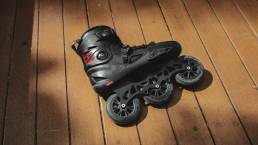Last month I wrote about the best rebrands in history. There were a lot of lessons in great brand design. However, the ever-evolving branding landscape and the pursuit of relevance can also lead to major failures.
I believe that we can learn as much, or more, from branding failures as from success stories. So, this month, let’s look at some of the worst rebrands in history. I hope it serves as a reminder that mindful design is critical to brand success.
01. Twitter To X: The Rebrand No One Understood
Elon Musk’s decision to rebrand Twitter as “X” in late 2023 caused controversy and legal disputes. Despite Musk’s vision of creating an all-encompassing “everything app,” the single-letter name erased the iconic Twitter brand identity it cultivated over 15 years. Twitter’s rebrand left many users confused about the purpose and future of the platform’s identity.
I can’t cover Twitter’s shift to X without one last note. This wasn’t Musk’s first attempt to adopt the name “X.” He had previously attempted to rebrand PayPal as “X” without success. It seems PayPal made a smart choice, as users continue to be confused about the “X” nearly six months later. Twitter highlights a common design struggle to balance innovation with brand recognition.

02. The 2023 Peloton Rebrand: Rebranding On The Heels Of Financial Loss
Facing financial losses, Peloton sought to revitalize its image and sales model in May 2023. The rebrand included changes to their visual design and business model. From a business perspective, Peloton introduced a new tiered subscription model for their app and expanded their focus on a broader product range. From a branding perspective, the company started showcasing inclusive body types in its marketing.
The visual rebrand spurred from a new demographic shift during the pandemic, from primarily fitness enthusiasts to individuals stuck at home seeking weight loss solutions. However, the rebrand was not received well. Long-time customers were confused about the tiered subscriptions. Plus, news of mass recalls launched almost simultaneously with the rebrand led to mixed reactions and further challenges for Peloton.
03. Patreon: A Continuous Lesson in Bad Logo Designs
Patreon launched in 2013 as a platform for creators to nurture their communities and get direct payments for content. However, its logos have been a continued lesson in what happens when you try too hard to be cool. In 2023, Patreon revealed a logo redesign to modernize its visual identity and better reflect the diversity of its creators. Its goal was to stay relevant while it launched new community features to compete with competitors like Discord, YouTube, and Cameo.
Patreon revealed multiple color schemes and shape distortions of the new 2023 logo. Users and designers were unimpressed. Terms like “ink smudge” and the nose print of a “polar bear sniffing around in a snowstorm” were tossed around design forums. The reason it failed? Patreon stripped the logo of core brand awareness features like a standardized color scheme and shape. Standardization is what helps drive brand recognition. Unfortunately, this redesign came after another poorly received logo redesign in 2017. Patreon’s history of bad logos highlights the delicate balance between tradition and brand innovation.

04. GAP’s Logo Change: Fastest Branding Flop in History
GAP’s attempt to modernize its logo in 2010 may be the biggest logo design failure we’ve seen. The logo rebrand primarily stemmed to combat lowered profits and stock prices. It also came from a wish to refresh a logo that had remained unchanged for 20 years. Seeking to transition from its established image of “classic, American design” to a more “modern, sexy, and cool” aesthetic, GAP hired the New York-based creative agency, Laird and Partners.
GAP’s new logo, consisting of a smaller blue box and Helvetica font, replaced the old logo virtually overnight. However, the abrupt change triggered an immediate backlash from consumers. The outrage was so strong that the company made the unprecedented decision to retract the new logo entirely within 6 days. GAP’s estimated financial loss for this venture was in the hundreds of millions of dollars. This redesign failure serves as a reminder of the importance of brand loyalty and the perils of straying too far from a company’s established brand identity.

05. New Coke: An Early Case Of Bad Redesign
Coca-Cola’s infamous 1985 rebranding as “New Coke” remains a cautionary tale to brand designers. The soft drink brand made the change over concerns of competitors, like Pepsi, overtaking the market. They wanted to zhoush up their branding and formula.
The public outcry against the alteration of the beloved classic formula was so intense that Coke had to take New Coke off the shelves. Consumer distrust continued until it reintroduced the original formula people loved as Coca-Cola Classic. The name stuck and is still being used to this day.

06. Tropicana’s Package Rebrand: From Classic to Costly
In January 2009, Tropicana launched a package redesign specifically targeting the North American market. The classic orange was replaced with a nearly unrecognizable glass of juice and a new font. The goal was to refresh its brand image and appeal to consumers. To announce the repackaging, Tropicana invested over $35 million in an advertising campaign. However, the response was far from favorable. Within two months sales plummeted by 20 percent. This resulted in a loss of approximately $30 million as consumers expressed a strong dislike of the redesign.
Recognizing the severity of the situation, Tropicana swiftly reversed course and reverted to the old package design. Even though the backtrack happened less than two months later, the damage had been done. The total loss from the rebrand surpassed $50 million. Tropicana is a costly reminder of the significant financial repercussions of poor branding decisions and lack of market research.

07. Pepsi Rebrand: Too Close to Politics
It does not escape me that Coke and Pepsi, sworn rivals, are on this list. The competition for what’s in your cup is not without casualties. Pepsi’s rebranding efforts in 2008 is one of them. In 2008, Pepsi introduced a significant redesign to its iconic logo. The new design rotated the circular icon, introduced a fresh font, and positioned the word “Pepsi” inside the white stripe within the circle. The goal was to refresh its image in the wake of focusing more on zero sugar.
However, this bold change from the familiar logo design was met with confusion. The revamped logo was compared to Barack Obama’s campaign logo. This tie to politics sparked controversy and criticism. The perceived resemblance further fueled skepticism about the brand’s attempt to stay relevant and appeal to a new generation of consumers. Ultimately, Pepsi’s rebranding efforts failed to resonate with its audience, and they went back to the old logo.

The Worst Rebrands Stem from Good Intentions
Companies don’t want to create poor brand designs. Each company on this list came to the table with good intentions. They intended to stay beloved by consumers and stay profitable. They serve as an important lesson. While rebranding can breathe new life into a company’s image, it can also alienate customers and damage reputation if not executed carefully. If you’re considering a rebrand, let’s talk first. We’ll walk through the strategy of how to innovate your branding while staying true to your brand identity.
Borja Zamora
A Barcelona native but San Francisco based, Borja explores digital marketing and design through articles, images, and quotes.
Related Posts
September 15, 2024
From Band-Aid to Popsicle: 12 Brands That Became Household Names
Great design is all around you. In our daily lives, we interact with objects…
August 27, 2024
The Secret Lives of Objects: Hidden Design Stories in Everyday Product Designs
Great design is all around you. In our daily lives, we interact with objects…
April 30, 2024
sfBIG: A Non-Profit Website Re-Design & Branding Case Study
After successfully rebranding several non-profits, I was honored to be asked to…
February 20, 2024
Revitalized Icons: 5 Of The Best Rebrand Examples
Dive into 5 of the best rebrand examples ever, with examples of rebranding…


